23 Feb 2024 : Daily Current Affairs
Daily Current Affairs
23-February-2024- Top News of the Day
1. Escalating Farmer Protests: Challenges and Structural Issues Plague Indian Agriculture
| Topic: GS3 – Agriculture – MSP This topic is relevant for both Prelims and Mains in the context of knowing facts about the declining share of agriculture in GDP, challenges faced by farmers, government policies related to agriculture (like MSP), and the broader socio-economic context of rural distress. |
| Context: |
|
More about the news:
Agriculture’s Declining Economic Significance:
- At the time of Independence, agriculture employed around 70% of India’s workforce and contributed to 54% of the GDP.
- However, today, agriculture contributes less than 18% to GDP while still engaging over half of the country’s workforce.
- The relative decline in the proportion of cultivators compared to agricultural laborers underscores the challenges facing the sector, with farming increasingly becoming financially unviable for many.
Challenges of Small Land Holdings and Indebtedness:
- Most Indian farmers operate on small and marginal land holdings, with nearly half of them burdened by debt.
- Data from the latest Situation Assessment Survey of Agricultural Households reveal that around 70% of agricultural households own less than 1 hectare of land.
- Additionally, a significant portion of farm households across various states grapple with low incomes and high indebtedness, exacerbating the economic strain on farmers.
Unfavorable Terms of Trade and Lack of Support:
- The index of terms of trade (ToT) between farmers and non-farmers indicates a persistent disadvantage for farmers, with the ToT remaining negative or stagnant over recent years.
- Contrary to the perception of farmers receiving excessive financial support, India lags behind other countries in terms of producer protection and agricultural support, according to OECD data.
- This highlights the inadequacy of existing support mechanisms in addressing the challenges faced by Indian farmers.
The MSP Debate and Structural Challenges:
- While the debate over MSPs garners attention, it serves as a manifestation of deeper structural issues plaguing Indian agriculture.
- The sector’s unremunerative nature, coupled with long-standing challenges such as small land holdings and indebtedness, necessitates a comprehensive approach beyond short-term fixes like MSP adjustments.
- Addressing the systemic issues requires concerted efforts to enhance farmers’ bargaining power in the market and create alternative avenues for rural employment, acknowledging that farming alone cannot sustainably support the livelihoods of millions dependent on it.
Conclusion:
- The complexities of India’s agricultural sector demand holistic solutions that address the underlying structural challenges, including land ownership patterns, indebtedness, and unfavourable terms of trade.
- Efforts to bolster farmers’ income and livelihood security must extend beyond MSPs to encompass broader policy reforms and investments in rural infrastructure and employment generation.
| Some solutions to tackle agricultural challenges |
(A) Promoting new technologies and reforming agricultural research and extension:
(B) Improving Water Resources and Irrigation
(C) Facilitating crop diversification to higher-value commodities
(D) Promoting high-growth commodities
(E) Developing markets, agricultural credit and public expenditures
(F) Climate change mitigation
(G) Marketing reforms
(H) Minimizing Post-Harvest Losses
(I) Developing Food Processing Industry
|
| PYQ: In view of the declining average size of land holdings in India which has made agriculture non-viable for a majority of farmers, should contract farming and land leasing be promoted in agriculture? Critically evaluate the pros and cons. (200 words/12.5m) (UPSC CSE (M) GS-3 2015) |
| Practice Question: Critically analyze the structural challenges facing the agricultural sector in India and evaluate the effectiveness of government policies in addressing them. (150 words/10 m) |
2. CBSE Proposes Pilot Study for Open Book Exams: Exploring Innovative Assessment Methods for Deeper Learning
| Topic: GS2 – Social Justice – Education This topic is relevant for both Prelims and Mains in the context of knowing facts about the educational reforms proposed by the CBSE. |
| Context: |
|
More about the news:
Understanding Open Book Exams:
- Open book exams allow students to refer to their textbooks and notes while answering questions.
- They can either be restricted or free type, where restricted exams permit only approved study material, whereas free type exams allow students to bring any relevant material.
- Unlike traditional closed-book exams, questions in OBEs are designed to assess conceptual understanding and analytical skills rather than rote memorization.
History and Context:
- Although not a novel concept, CBSE previously introduced Open Text Based Assessment (OTBA) in 2014, aiming to reduce memorization burden and foster information processing skills among students.
- However, the discontinuation of OTBA due to its perceived failure to cultivate critical abilities highlights the challenges in implementing open book assessments effectively.
- In higher education, OBEs are relatively common, with various institutions, including engineering colleges and universities, adopting them for assessment purposes.
Perceptions and Challenges:
- Contrary to common perception, OBEs are not inherently easier than traditional exams; they aim to test deeper understanding and application of concepts.
- Teachers face the challenge of crafting questions that require critical thinking rather than straightforward answers.
- Connectivity issues and the need for skill development among students for effective performance in OBEs pose additional challenges.
Alignment with Educational Reforms:
- CBSE’s proposal aligns with broader educational reforms aimed at transitioning from rote memorization to competency-based learning.
- While the National Education Policy 2020 does not explicitly mention open book exams, it emphasizes competency-based learning and assessment reforms.
- Similarly, the National Curriculum Framework emphasizes the need for assessments that accommodate diverse learning styles and provide constructive feedback.
Research Insights:
- Studies on open book exams suggest mixed results, with some indicating reduced stress levels among students but also highlighting challenges such as connectivity issues and the need for skill development.
- While mean scores may be higher in OBEs compared to closed-book exams, there is a need for focused training and skill development to maximize the benefits of open book assessments.
Conclusion:
- CBSE’s proposal for open book exams reflects ongoing efforts to reform assessment practices and promote deeper learning outcomes among students. However, effective implementation requires addressing various challenges and ensuring alignment with broader educational objectives.
| Pros and Cons of Open Book Exams (OBE) |
Pros:
Cons:
|
| PYQ: Consider the following statements: (2018) 1) As per the Right to Education (RTE) Act, to be eligible for appointment as a teacher in a State, a person would be required to possess the minimum qualification laid down by the State Council of Teacher Education concerned. 2) As per the RTE Act, for teaching primary classes, a candidate is required to pass a Teacher Eligibility Test conducted in accordance with the National Council of Teacher Education guidelines. 3) In India, more than 90% of teacher education institutions are directly under the State Governments. Which of the statements given above is/are correct? (a) 1 and 2 (b) 2 only (c) 1 and 3 (d) 3 only Ans: (b) |
| Practice Question: Critically analyze the proposal by the Central Board of Secondary Education (CBSE) to conduct pilot studies on open book exams for Classes 9 to 12. Evaluate the potential benefits and challenges of implementing open book exams in the Indian education system. (250 words/15 m) |
3. International Team Achieves Breakthrough: Laser Cooling of Positronium Marks Milestone in Atomic Physics
| Topic: GS3 – Science & Technology – Development and their applications This topic is relevant for both Prelims and Mains in the context of knowing facts about the breakthrough achievement in laser cooling of Positronium by the AEgIS collaboration highlights advancements in experimental physics and laser cooling techniques |
| Context: |
|
More about the news:
Announcement and Experimental Setting:
- The achievement was announced by physicists representing 19 European and one Indian research group within the AEgIS collaboration, following experiments conducted at the European Organization for Nuclear Research (CERN) in Geneva.
- This breakthrough serves as a crucial precursor to future experiments involving anti-hydrogen formation and the measurement of Earth’s gravitational acceleration on anti-hydrogen.
- Additionally, it holds potential for developing gamma-ray lasers with applications beyond physics, including atomic nucleus exploration.
Development and Challenges:
- The AEgIS experiment underwent rigorous development and testing phases, with several experimental runs conducted in the accelerator beam hall of CERN over the past few years.
- Formal acceptance as a scientific experiment by CERN in 2008 marked the beginning of a complex process involving the design and construction of particle traps for confining antiparticles, antiprotons, and positrons.
- Despite the challenging experimental environment, characterized by the constraints of the accelerator beam hall, technological innovations were instrumental in realizing the experiment’s objectives.
Laser Cooling Process and Results:
- Experimentalists successfully cooled Positronium atoms from approximately 380 Kelvin to about 170 Kelvin using a 70-nanosecond pulse of an alexandrite-based laser system.
- The cooling was demonstrated in one dimension, employing lasers operating in either the deep ultraviolet or infrared frequency bands.
- This achievement underscores the advancement in laser cooling techniques and their potential applications in fundamental research and beyond.
Conclusion:
- The successful laser cooling of Positronium represents a significant milestone in atomic physics, demonstrating the feasibility of manipulating and controlling fundamental atomic systems for scientific exploration and technological innovation.
| About CERN |
|
| PYQ: The efforts to detect the existence of Higgs boson particle have become frequent news in the recent past. What is/are the importance of discovering this particle? 1) It will enable us to understand as to why elementary particles have mass. 2) It will enable us in the near future to develop the technology of transferring matter from one point to another without traversing the physical space between them. 3) It will enable us to create better fuels for nuclear fission. Select the correct answer using the codes given below: (a) 1 only (b) 2 and 3 only (c) 1 and 3 only (d) 1, 2 and 3 Ans: (a) |
| Practice Question: Critically evaluate the significance of the recent breakthrough achieved by the international team of physicists in laser cooling of Positronium. Discuss the implications of this achievement for fundamental research in atomic physics and its potential applications in technological innovation. (250 words/15 m) |
4. India Achieves Milestone in Kala Azar Elimination: Reports Less Than One Case Per 10,000 Population Nationwide in 2023
| Topic: GS2 – Social Justice – Health This topic is relevant for both Prelims and Mains in the context of knowing facts about the achievement of targets in combating Kala Azar which reflects the government’s efforts in public health governance and disease control. |
| Context: |
|
More about the news:
Historical Context and Targets:
- India had set various deadlines for Kala Azar elimination, starting from 2010 and extending to 2015, 2017, and eventually 2020.
- The elimination target is defined as no block in the country reporting more than one case per 10,000 people.
- Despite missing several deadlines, India has made substantial progress in reducing the disease burden, particularly in endemic states like Bihar, Jharkhand, West Bengal, and Uttar Pradesh.
Verification Process and Future Steps:
- While India has met the required targets, the verification and certification process by WHO experts is crucial for officially declaring the country Kala Azar-free.
- The sustained maintenance of low case numbers over the next three years will be essential for India to receive WHO certification.
- Experts will evaluate surveillance mechanisms and assess the sustainability of success before issuing certification.
Key Interventions and Challenges:
- India’s success in achieving elimination targets can be attributed to rigorous interventions, including indoor residual spraying, sealing of mud walls to prevent sandfly nesting, and mobilization of the ASHA network to ensure completion of treatment for Post Kala-azar dermal leishmaniasis (PKDL) patients.
- However, tracking PKDL cases remains a challenge due to the potential for disease resurgence from untreated reservoirs.
Advancements in Diagnosis and Treatment:
- Advancements in diagnostic tools and treatment regimens have facilitated early diagnosis and improved patient outcomes.
- Point-of-care diagnostic kits and shorter treatment durations have enhanced the efficiency of disease management compared to previous decades, reducing the burden on patients and healthcare systems alike.
Conclusion:
- India’s achievement in reducing Kala Azar cases signifies a significant public health victory, although sustained efforts and vigilance are essential to maintain progress and ultimately eliminate the disease entirely.
| What is Kala-Azar? |
About:
Transmission and Symptoms:
Recorded Cases in India:
Post Kala-azar Dermal Leishmaniasis (PKDL):
Treatment:
Strategies for Elimination in India:
|
| PYQ: Consider the following statements: (2017) 1) In tropical regions, Zika virus disease is transmitted by the same mosquito that transmits dengue. 2) Sexual transmission of Zika virus disease is possible. Which of the statements given above is/are correct? (a) 1 only (b) 2 only (c) Both 1 and 2 (d) Neither 1 nor 2 Ans: (c) |
| Practice Question: Discuss the significance of India’s achievement in meeting the target of reporting less than one case of Kala Azar per 10,000 population across all blocks in 2023. Analyze the key interventions and challenges encountered in India’s efforts towards Kala Azar elimination. (250 words/15 m) |
5. Should India have regional benches of the Supreme Court?
| Topic: GS2 – Indian Polity – Judiciary Critical for UPSC as it delves into the debate on establishing regional benches, impacting judicial efficiency and access to justice. |
| Context |
|
Introduction:
- The Parliamentary Standing Committee on Personnel, Public Grievances, Law, and Justice has recommended the establishment of regional benches of the Supreme Court in India.
- However, the apex court has consistently rejected this idea, and the matter is currently sub judice.
- Justice Govind Mathur and Sanjoy Ghose discuss the implications of regional benches.
Addressing Geographical Bias:
- Justice Mathur acknowledges a shift in his perspective, emphasizing the need for regional benches to address the challenges faced by people living far from Delhi.
- Sanjoy Ghose raises concerns about frivolous petitions and suggests implementing a mechanism to scrutinize the types of petitions admitted to the Supreme Court.
Virtual Hearings vs. Regional Benches:
- Ghose suggests a hybrid approach, with preliminary and admission hearings conducted virtually, while final hearings take place physically.
- Justice Mathur contends that while technology is useful for court management, virtual hearings may not be an effective alternative to regional benches, as physical hearings maintain objectivity.
Focus on Constitutional Matters:
- The article includes a proposal for a separate court of appeal and courts of cassation, similar to the French system, to alleviate the burden on the Supreme Court.
- Ghose advocates for a court of cassation to handle non-constitutional matters, allowing the Supreme Court to focus exclusively on constitutional cases.
Conflicting Precedents and Increased Litigation:
- Ghose argues that a separation of the court of cassation and the permanent appellate court could reduce conflicting decisions.
- Justice Mathur disagrees, citing technology’s role in keeping judges updated and maintaining uniformity in decisions.
Impact on Lawyers and Access to Justice:
- Ghose acknowledges concerns raised by the Supreme Court Bar about the Balkanization of the Supreme Court but believes regional benches would lead to a vibrant regional bar.
- The discussion highlights the potential benefits of regional benches, including greater opportunities and democratization of the legal profession.
Reforming High Courts and Dealing with SLPs:
- Justice Mathur emphasizes the need for overall judicial reforms, not limited to High Courts, to improve efficiency.
- The discussion includes a suggestion to retain certain exclusive powers of the Supreme Court while addressing the issue of overburdening with Special Leave Petitions (SLPs).
Conclusion:
- The Article explores the pros and cons of establishing regional benches, touching upon geographical bias, virtual hearings, the focus on constitutional matters, conflicting precedents, impact on lawyers, and the need for broader judicial reforms.
| Practice Question: Examine the potential benefits and challenges of establishing regional benches of the Supreme Court in India. (150 words/10 m) |
6. Top court says laws have teeth but pollution control boards are slack.
| Topic: GS3 – Environment – Environmental Pollution and Degradation GS2 – Governance – Government policies – Issues arising out of their implementation UPSC relevance: Examines legal and environmental aspects, emphasizing enforcement gaps in pollution control, affecting industries and governance. |
| Context |
|
Additional information on this news:
- The Supreme Court holds Tamil Nadu Pollution Control Board (TNPCB) and Thoothukudi district administration equally responsible for toxins from Vedanta’s copper smelting plant.
- Justices criticize pollution regulators for being slack in implementing laws, emphasizing the problem is not the absence of laws but lack of enforcement.
- The court questions TNPCB on shutting down the plant without defined violations, highlighting the impact on investment.
- Vedanta’s appeal to reopen the plant, closed in 2018 due to pollution concerns, is being heard.
- TNPCB argues the refusal to renew consent was based on the expired status of the application.
| Regulatory bottlenecks in controlling environmental pollution |
Challenges:
Way Forward:
By addressing these challenges and implementing effective solutions, we can create a more robust regulatory framework that safeguards our environment and promotes sustainable development. |
| Practice Question: Despite existing regulations, environmental pollution remains a major challenge in India. Critically examine the key regulatory bottlenecks hindering effective control and suggest a multi-pronged approach to overcome them. (150 words/10 m) |
7. IISc scientists develop synthetic antibody to neutralise deadly snake bite toxin
| Topic: GS3 – Science and Technology – Development & their applications UPSC Relevance: Advances in synthetic antibody for snakebites, merging technology and biology, addressing public health and biodiversity conservation. |
| Context |
|
Additional information on this news:
- Scientists at IISc, Bengaluru, develop a synthetic human antibody to neutralize potent neurotoxin from Elapidae family snakes, including cobra and black mamba.
- The team applies a strategy used for HIV and COVID-19 antibodies, a novel approach for snakebite treatment.
- The antibody targets a conserved region in the core of a major toxin (3FTx) found in elapid venom.
- Using yeast cell surfaces, a large library of artificial antibodies is designed and tested, leading to the selection of one effective antibody.
- In animal models, the synthetic antibody, when mixed with a toxic 3FTx, significantly increases survival compared to mice injected with the toxin alone.
8. The women of ASHA: overworked, underpaid and on the edge of breakdown
| Topic: GS2 – Governance – Government policies – Issues arising out of their implementation GS2 – Social Justice – Health UPSC Relevance: Examines challenges faced by ASHAs, pivotal in India’s health schemes, highlighting societal, economic, and health dimensions. |
| Context |
|
Introduction:
- ASHAs (Accredited Social Health Activists) in India face challenges with a triple burden: domestic chores, community health work, and health centre responsibilities.
- Overworked and underpaid, ASHAs risk health issues like anaemia, malnutrition, and non-communicable diseases.
The ASHA Role:
- ASHAs, primarily women, serve as community health workers advocating for resource-deficient communities, vital for India’s health schemes.
- Their role expanded beyond maternal and child health to various tasks, including vaccination follow-ups, mental health support, and reporting domestic violence cases.
The Study’s Findings:
- A study in Bhopal traced 40 ASHAs during COVID-19, revealing their challenging routines and limited autonomy over time, money, and well-being.
- Erratic eating habits, inadequate rest, and expanded job responsibilities contribute to health vulnerabilities among ASHAs.
Economic Inequities:
- ASHAs, classified as volunteers, face economic, physical, and psychological challenges, highlighting power inequities.
- Despite their essential care work, ASHAs are not adequately cared for by the system.
Environmental Challenges:
- Extreme weather conditions, including heat waves, pose additional challenges, impacting the health of ASHAs.
- Limited discussion and protective measures for ASHAs working in extreme weather conditions are noted.
Health Impact and Maternal Services:
- ASHAs’ health directly affects their ability to work effectively, influencing women’s access to maternal services and safer deliveries.
- Strengthening the ASHA program is crucial for advancing child and maternal health outcomes in India.
Monetary Barriers and Out-of-Pocket Expenses:
- ASHAs, as honorary workers, receive varied incomes, and their health is not covered under government health schemes.
- Out-of-pocket expenditures for logistical costs contribute to economic challenges for ASHAs.
Violence and Marginalization:
- ASHAs face gender and caste hierarchies, experiencing abuse, harassment, and assault with limited redressal systems.
- Historically from marginalized communities, they encounter stress working within a health system dominated by privileged individuals.
Calls for Change:
- ASHAs demand fixed honorariums, stipulated working hours, access to maternity leaves, and pension.
- Advocates suggest recognizing ASHAs as full-fledged workers, paying them decently, and addressing their physical and emotional well-being.
Conclusion:
- Recognizing and addressing the challenges faced by ASHAs is crucial for sustaining India’s community health programs and improving overall public health outcomes.
| Practice Question: Discuss the challenges faced by Accredited Social Health Activists (ASHAs) in India and propose measures for their improved well-being. (150 words/10 m) |
For Enquiry

23 Feb 2024 : Daily Current Affairs

23 February 2024 : The Hindu Editorial Notes PDF

23 February 2024 : PIB Summary for UPSC

23 Feb 2024 : Indian Express Editorial Analysis
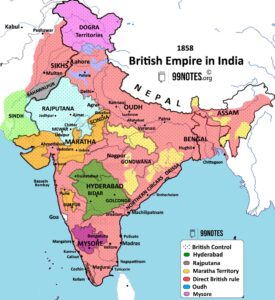
Annexation of Sindh & Punjab by British- Complete Notes for UPSC
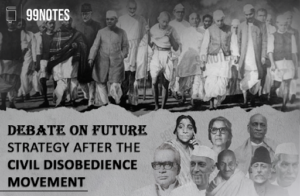
Debate on future strategy after Civil Disobedience Movement
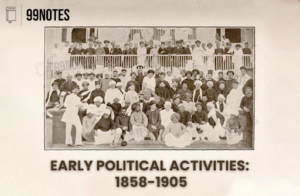
Early Political Activities: 1858-1905 [Complete Notes for UPSC]
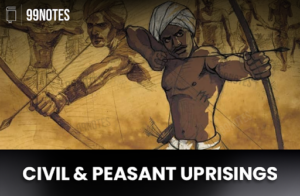
Peasant Movements in India- Complete Notes for UPSC
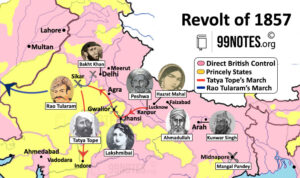
Revolt of 1857

Economic Impact of British Rule in India- Complete Notes for UPSC
Daily Current Affairs 23 Feb 2024 : Daily Current Affairs Daily Current Affairs
23-February-2024- Top News of the Day
1. Escalating Farmer Protests: Challenges…
Feb 2024 The Hindu 23 February 2024 : The Hindu Editorial Notes PDF The Hindu Editorial
23-February-2024
1. The government must keep the regulatory environment of space…
feb 2024 PIB 23 February 2024 : PIB Summary for UPSC PIB Summary for UPSC
23 February -2024
1. With a focus on promotion of organic exports, APEDA forms…
Indian Express 23 Feb 2024 : Indian Express Editorial Analysis Indian Express Editorial Analysis
23-February-2024
1. A long institutional road
Topic: GS2 – Polity…
Modern India Annexation of Sindh & Punjab by British- Complete Notes for UPSC Annexation of Sindh & Punjab by British
By 1818, the entire Indian subcontinent, except Punjab and…
Modern India Debate on future strategy after Civil Disobedience Movement Debate on future strategy after civil Disobedience movement
In the Aftermath of the withdrawal of the…
Modern India Early Political Activities: 1858-1905 [Complete Notes for UPSC] Early Political Activities: 1858-1905
The revolt of 1857 was the first major large-scale revolt against…
Modern India Peasant Movements in India- Complete Notes for UPSC Peasant Movements in India
Peasant movements in India have been pivotal in shaping the socio-political…
Modern India Revolt of 1857 The Revolt of 1857 was one of the most significant watershed moments during British rule. During this…
Modern India Economic Impact of British Rule in India- Complete Notes for UPSC Economic Impact of British Rule in India
The British Empire in India was highly organized administratively….



